David Remsen at the MBL: Honoring an Extraordinary Career

No one person can describe the multi-talented David Remsen, a larger-than-life presence in Woods Hole who died on December 14, 2022. This article is an effort to address the many professional contributions David made to the Marine Biological Laboratory (MBL) during his more than 25-year career at the lab. It was a varied career with many facets, which he wove into a profound knowledge of marine biodiversity and of the MBL.
We invite David’s relatives, colleagues and friends to leave their own reminiscences here, which we will compile for his family. Among other things, David was a wonderful storyteller, and we look forward to sharing your memories of him.
A Celebration of Life service for David was held at the MBL on August 25, 2023.
It felt like the heart of the Marine Biological Laboratory went quiet, the day David Remsen died. Everyone on the Woods Hole, Mass., campus knew him in his central role as director of the Marine Resources Center (MRC) and its specimen-collecting operations, as did thousands of scientists worldwide who have been at MBL to conduct research, teach, or study.
A passionate naturalist, Remsen was deeply familiar with Cape Cod’s ecology and diverse marine species, from plankton to squid, fish to sharks. In his first MBL position as a summer diver/collector (1984-85), Remsen began to connect his lifelong curiosity about the local marine environment with MBL’s mission. And years later, when he directed the MRC and its operations (2012-2022), his knowledge enabled his team to collect a wide spectrum of organisms for research, expertly curated to scientists’ needs.
“We always talk about how important the geographical location of the MBL is, in that we have access to all of these different species and diversity,” said MBL Director Nipam Patel. “But it's one thing to know it exists, it's another thing to get your hands on it. Dave provided that essential link between knowing it exists and actually having it in hand.”
Beyond his deep knowledge of the local marine habitat, Remsen was also a key contributor to the field of biodiversity informatics, which strives to organize all knowledge about species in an electronic format. Remsen’s pioneering work in this field while employed in the MBLWHOI Library (1991-2006) enabled MBL to partner in major international projects, while broadening his own knowledge of biodiversity to an encyclopedic degree.
A gifted and engaging storyteller, Remsen over time shaped a narrative about the MBL, its environment, and the value of its biodiversity for basic research while giving tours in the MRC or on the MBL’s collecting vessel, the Gemma. Exuberant, talkative, generous and egalitarian, Remsen made everyone feel welcome, from high-schoolers to Nobel laureates, and while he facilitated their research or training, he also delighted in spinning them stories about why the MBL is so extraordinarily special.
“When I think of Dave Remsen, I think of him on the Gemma, showing students or donors or families why a plankton sample he just pulled from the ocean is so important and exciting,” said Jocelyn Malamy of University of Chicago. “He had a really big place in making everybody feel like the MBL was their home.”
For a moment, no one could imagine an MBL without David Remsen.
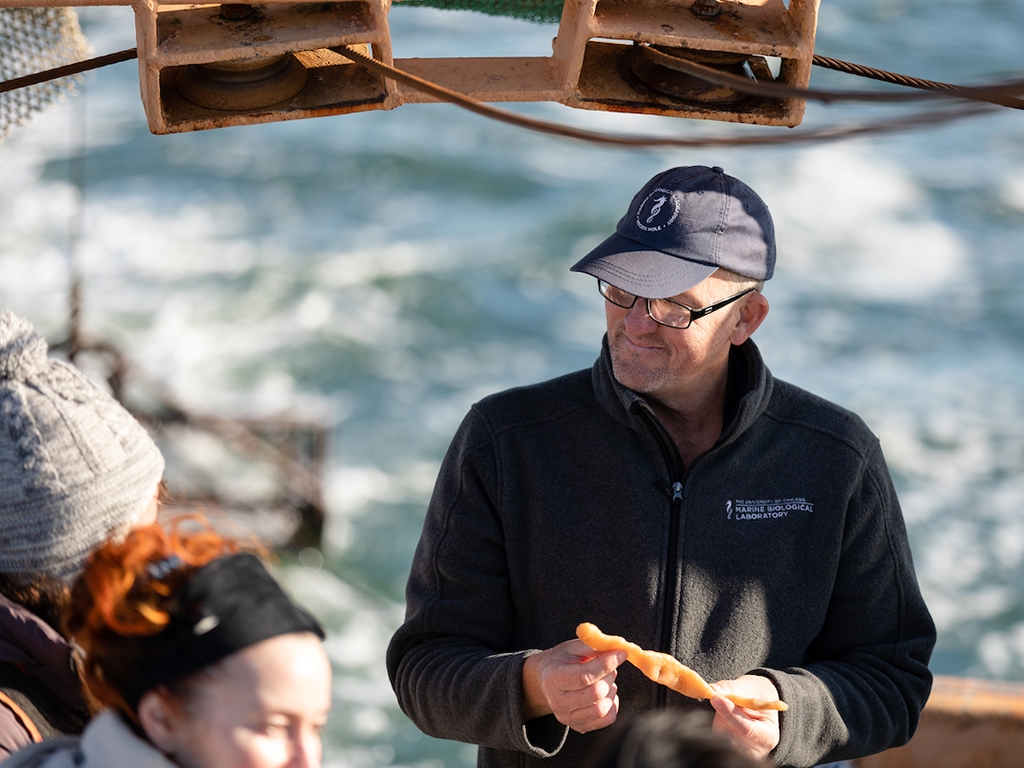
“A naturalist through and through”
E.O. Wilson, the late biologist and biodiversity expert from Harvard University, once described David Remsen as “a real naturalist” -- high praise, indeed, from a legendary naturalist himself.1
From childhood on, Remsen was curious about the natural world. Born in Syracuse, N.Y., on March 23, 1962, he moved to Woods Hole with his family when he was 5 years old. Among his early memories were sea-star fishing on an MBL boat and visiting the Supply Department (now Marine Resources Center), which he thought was “the coolest place to go as a kid.”2
“The Supply Department was like a living aquarium, but you could get your hands right in or on the animals,” Remsen recalled. “It wasn’t like the MRC now. It was this ramshackle wooden house with pipes all over the ceiling, wooden countertops, the floor was always wet…If you looked under some of the tanks there would be crabs and flounder living in the troughs…You never knew what you were going to find in there. And the people [who worked there] were much more off-the-street New England fishing types rather than people with degrees in animal husbandry…They were old-timers who knew where to go dig clams and their associated invertebrates, where to go dredge, where to collect things.”2
Remsen grew up along the Woods Hole coastline, picking up rocks to discover what was underneath, exploring in boats and swimming in the ocean (which he continued to do every day as an adult, no matter the season). He enrolled at the University of Wisconsin-Milwaukee and earned a degree in biology in 1985. During the summers of his junior and senior years (1984-85) he was thrilled to be hired as a MBL diver/collector.
“It was very competitive, because everybody wanted to work in the Supply Department,” Remsen recalled. “You got to catch fish and hang out on boats, stuff like that.”2
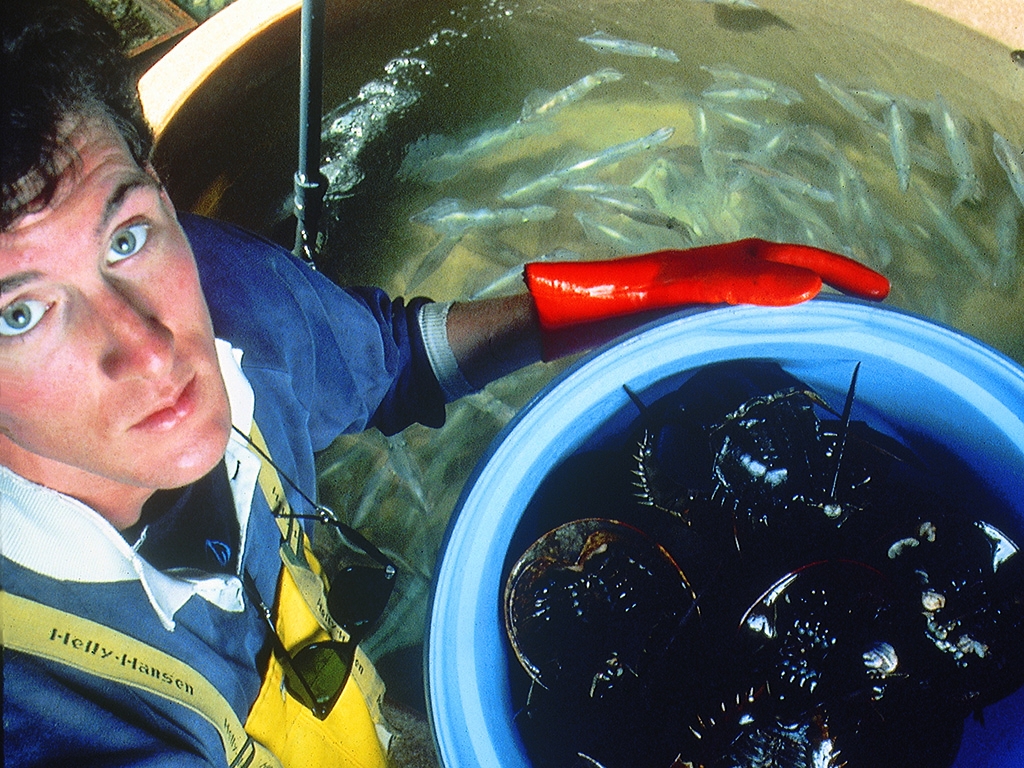
Joe DeGiorgis, now professor of biology at Providence College, was hired as a fellow MBL diver in 1985 by John Valois, manager of the Supply Department, “who gave us the opportunity of a lifetime,” DeGiorgis said. DeGiorgis met Remsen on his first day at the MBL “and we became instant friends.” Ed Enos was captain of the dive boat.
At the time, surf clams (Spissula solidissima) “were really hot” at the MBL for studies of cell division, Remsen recalled, with landmark and in some cases Nobel Prize-recognized research carried out by Tim Hunt, Joan Ruderman, Avram Hershko, and many other scientists.2
“We collected the clams at Lobsterville Beach on Martha’s Vineyard, in between Menemsha Harbor and the Gay Head (now Aquinnah) lighthouse,” DeGiorgis said. “We’d dive in about 15 feet of water and collect about 300 clams a day for MBL scientists. We thought that strip between Menemsha and Gay Head was one of the most beautiful places on Earth.”
The divers also collected the parchment worm, Chaetopterus, for MBL scientist Shinya Inoué’s studies of mitosis, and filled 50-gallon drums with a local red algae, Rhodymenia, which was used commercially for fluorescence microscopy.
Even then, Remsen had a keen sense of the biodiversity in the waters off Woods Hole. Scoop up a handful of bottom sediment, and Remsen saw a whole world thriving within.
“Dave and John Valois were both phenomenal at making a piece of dirt sound exciting,” said DeGiorgis. “Because it wasn’t a piece of dirt – it was a whole ecosystem. It was alive.”
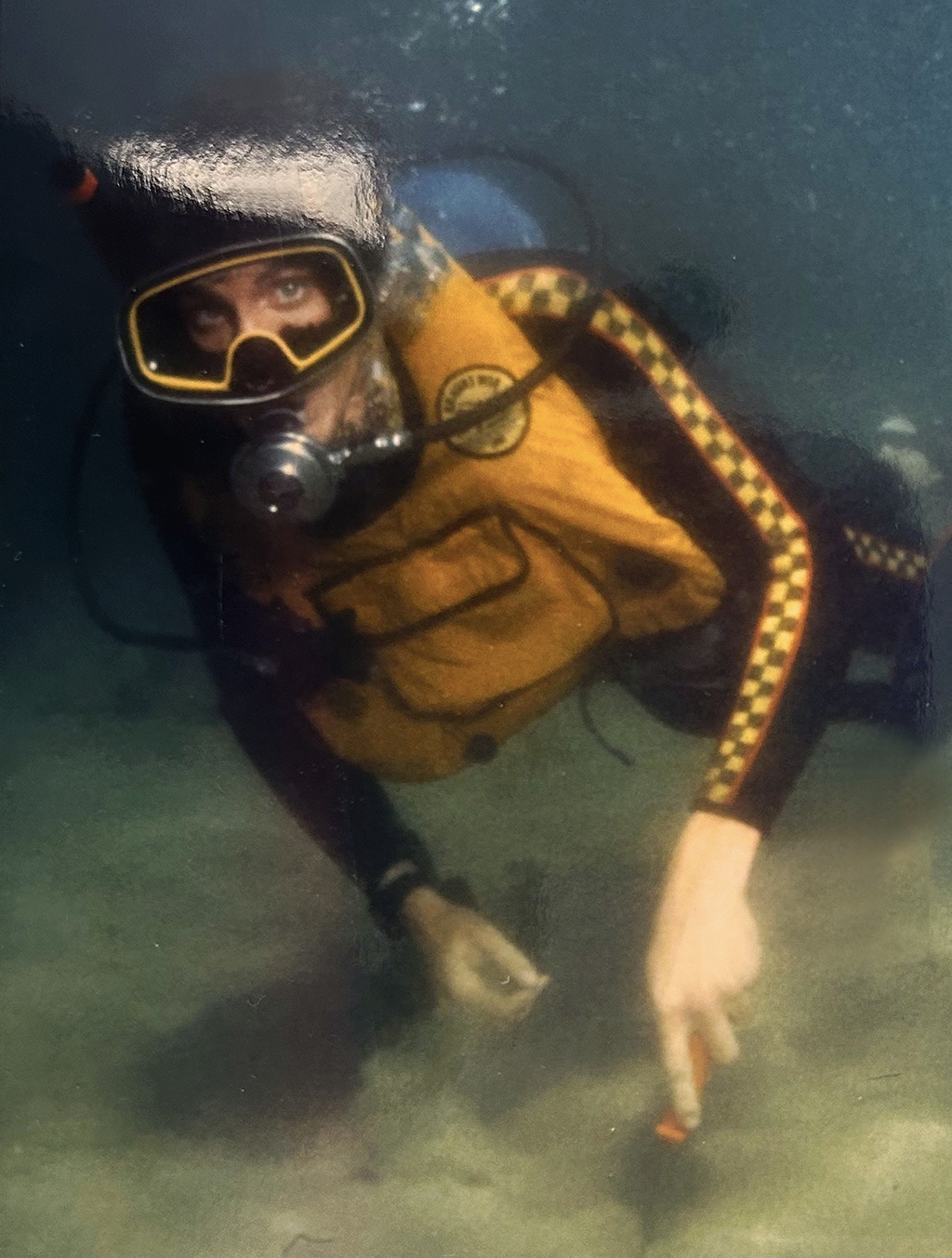
From nature to the lab
Years later in 2012, when Remsen became manager and then director of Marine Research Services, he brought a lifetime of exploring the local environment to the job -- to the enormous benefit of MBL scientists and students.
“I’ve visited more than 50 marine labs around the world,” said Mark Westneat of University of Chicago. “There’s always somebody at the center of the lab that helps visitors and students get their work done and find the animals they need, and David was one of the best I’ve ever met at that. He was special.”
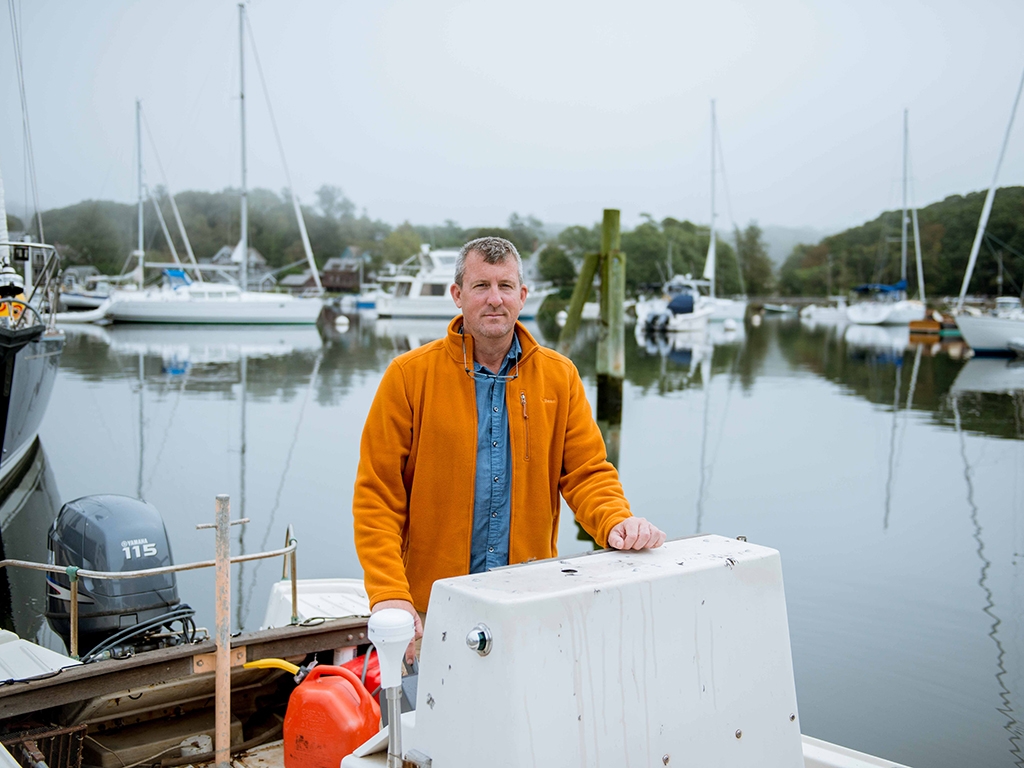
“We did everything we could to facilitate whatever the researchers wanted to do – get the animals they requested, build the [aquatic] systems they needed,” said Lisa Abbo, MBL veterinarian who worked closely with Remsen. “And Dave had so, so many connections – he had phone numbers for fishermen all over the Cape.” If a scientist requested a species that was beyond the Gemma’s collecting range, Remsen knew who to call to ask for a hand.
Just locating the species consistently in an ever-changing landscape is challenging, Remsen said in 2014. “The animals move around; habitats change over time. We need a presence out there all the time, looking around, scouting.” Also, “bringing them back alive requires special handling, equipment and know-how.” Remsen knew where to find gravid (egg-carrying) species, and he had the husbandry expertise to keep them gravid, often well beyond their normal breeding season, in the Marine Resources Center.3
“Dave helped me so many times because he knew how to provide animals at certain stages of development,” said Neil Shubin of University of Chicago, who works on sharks, skates and their embryos at MBL. “It’s the seed corn of the research we do. Having someone with that knowledge was really powerful.”
Remsen and the MRC also supplied organisms to the MBL courses. And in some cases, he led students on specimen collecting trips. Remsen co-led a section on marine invertebrates for the 2021 UChicago-MBL undergraduate course, “Biogeography and Species Distribution,” in which students explored the local biota to compare patterns of abundance and distribution.
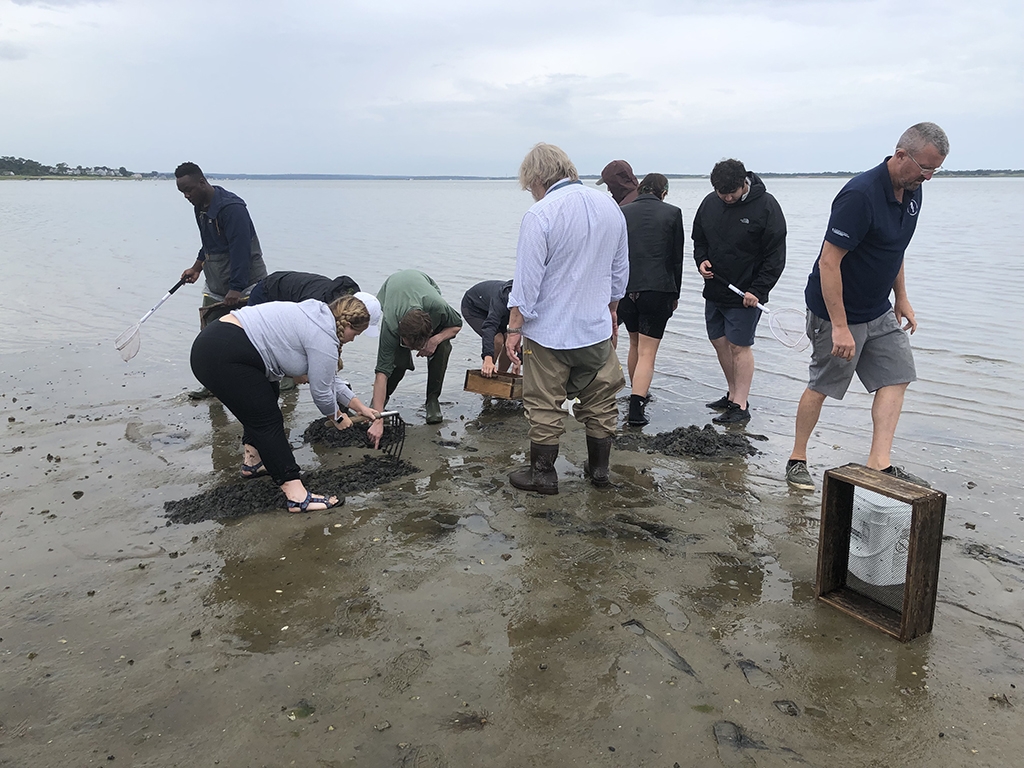
Beyond his hands-on familiarity with the local ecology, Remsen had an encyclopedic knowledge of marine life and of the scientific literature on marine species, gained from his decades of work in biodiversity informatics. He also studied the history of what species had been used at MBL for what types of research.
“If we came in and needed a species, or needed the basic, natural history information about an animal, David was just an encyclopedia, and incredibly helpful,” said neurobiologist Melina Hale of University of Chicago. “A few times we went to MBL to get certain specimens, but Dave was just incredible about saying, ‘Oh, you should look at this, you should think about that’ … He could suggest other species that might be of interest, given their unique biology and relationship to our [research] questions.”
“Most scientists come to the MBL accustomed to working with relatively domesticated research organisms; they come from [labs in urban or landlocked areas] or the animals come from Petri dishes or vials,” said Alejandro Sánchez Alvarado of the Stowers Institute for Medical Research. Remsen, however, introduced them to local species that could significantly broaden their research horizons.
“Dave was essentially a living bridge between the ecosystem and the [scientists] who knew nothing about the ecosystem, and more often than not, talking to Dave allowed them to realize how little they knew about the questions that they were asking,” Sánchez Alvarado said. “It was always mind-expanding. And it was in that particular arena that I think Dave shone the brightest light.”
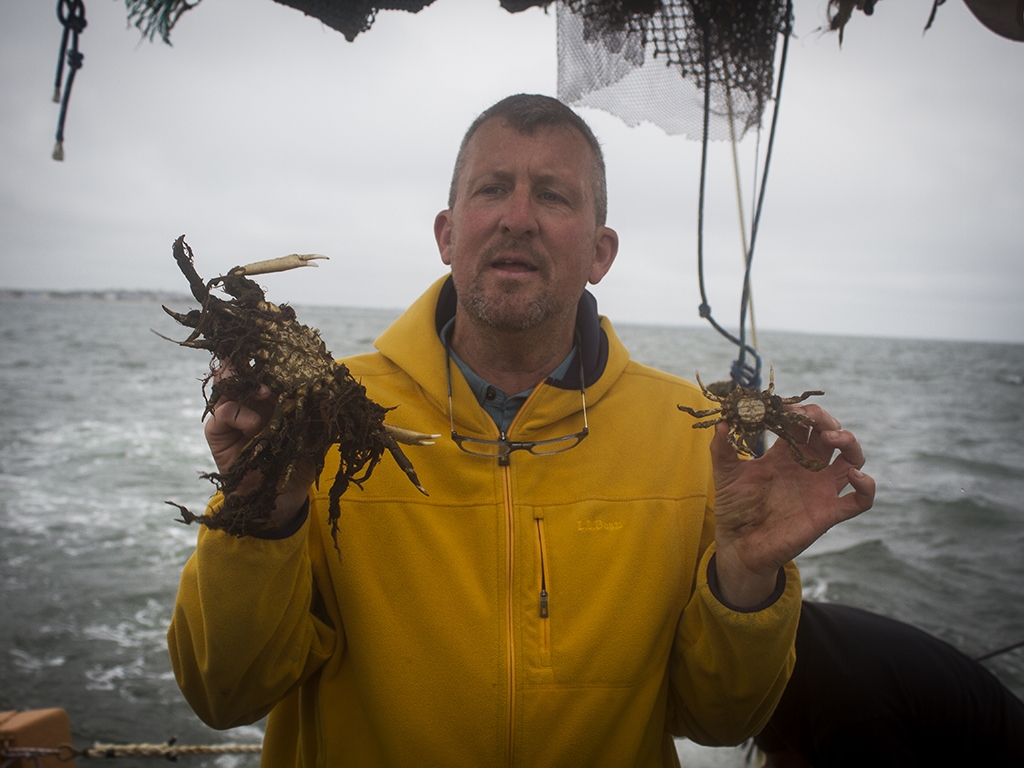
Brady Weissbourd of M.I.T., who uses the jellyfish Clytia to study the nervous system, is one of many scientists that Remsen helped in launching their research program. “When we started our current work by going to Woods Hole and screening through organisms to develop as a model system, I worked closely with Dave Remsen, who introduced me to a huge number of species,” Weissbourd said. “I benefited enormously from his knowledge and generosity.”
Remsen’s keen interest in the natural world didn’t stop at marine organisms – it was all-encompassing. A prolific contributor to iNaturalist, a website for sharing observations of species, Remsen posted 2,741 observations between 2008 and 2022 that run the gamut from birds to flowers to insects to mushrooms to marine life.
“He was a naturalist, through and through,” said Erin Pyszka, who worked for Remsen as an animal care technician and facilities supervisor. She remembers him jumping up in the middle of meetings to grab his binoculars and watch a bird soaring outside the window.
“You would go for a walk with Dave, say on Penikese Island, and he’d say, ‘Oh look, there’s a fill-in-the-blank. And it could be a plant, it could be a bug, it could be an animal, it could be a bone. I mean, his knowledge was just vast,” said Linda Hyman, Burroughs Wellcome Director of Education at MBL.
And it never stopped. Last fall, Remsen spotted a gigantic millipede near the MBL cottages and “he knew immediately that it was probably a new species to Cape Cod,” said MBL Director of Research Anne Sylvester. Remsen and an entomologist colleague wrote up a brief manuscript about the species, which has been accepted for publication.
A gift for communication: Remsen as MBL ambassador
Although it was not necessarily his job to do so, Remsen over time became a powerful MBL spokesperson. “Dave Remsen was the embodiment of the MBL and Woods Hole, and you felt it when you were with him,” said Shubin.
“Dave would be the person that I would want to put in front of any student, at any level, any day, because he was so inspirational. His sheer charisma would overtake the room,” said Hyman. “He was an MBL treasure in that regard.”
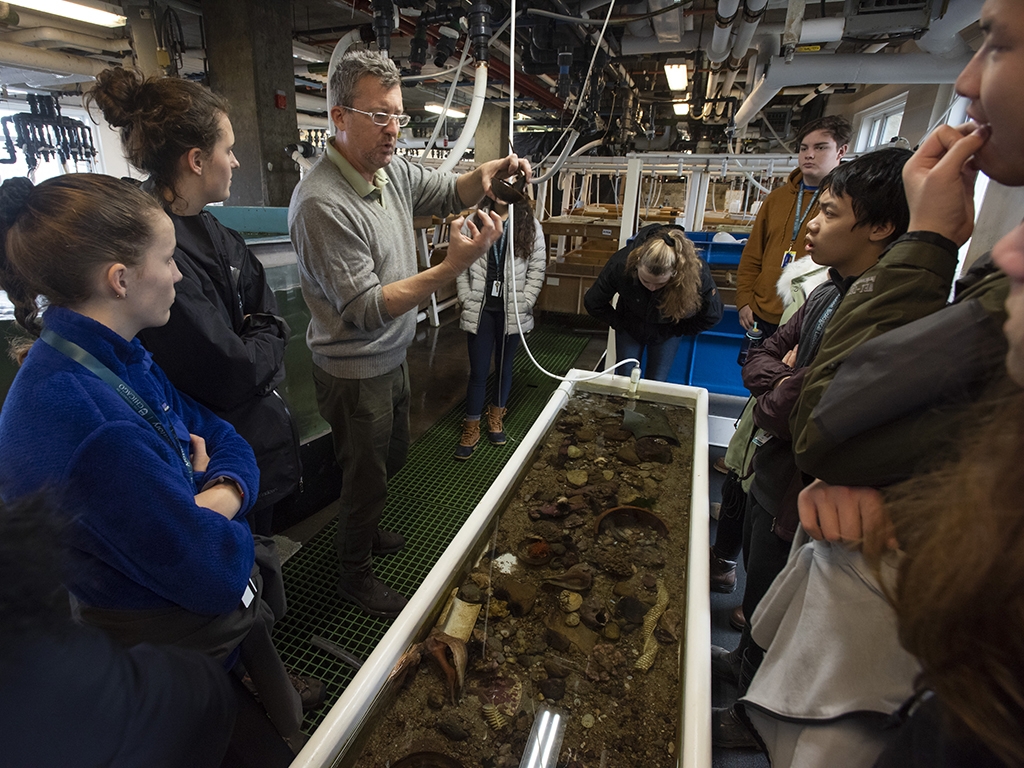
Besides his genuine and infectious enthusiasm for Woods Hole biodiversity and for the MBL, Remsen instinctively knew what nugget of information, what funny anecdote would spark the interest of his audience – whether it be children, students and faculty, journalists, donors, or trustees. And after a time, his Gemma and MRC tours became legendary – “world famous,” said Sylvester.
“All of our advanced research training courses wanted to go out on the Gemma with Dave,” said Hyman. “He not only knew everything, but he addressed it with abandon.” And while Remsen was inspiring students with detailed, colorful introductions to the organisms the Gemma had just pulled from the ocean, the students were thinking about what they might do for an independent research project. “For that reason, I wouldn’t be surprised if Dave contributed to the research mission of our courses,” Hyman said.
“You could not imagine a more articulate spokesperson for the creatures of the region,” said Shubin.
Remsen eventually formalized these talks into a lecture that he gave to students in the MBL’s High School Science Discovery Program. In fact, his talent at connecting with youth and their teachers was of enormous assistance to Alison Crawford, chief of staff to the MBL director, when she was charged with implementing the program in 2017.
“The high-school program wouldn’t be here today if it wasn’t for Dave. He was an invaluable partner for me throughout the early planning stages,” Crawford said. Remsen was instrumental in the vision, providing ideas for curriculum development, and promoting the MBL’s first high-school courses, she said, especially while on the road to introduce it to teachers. “He was just so can-do, so inspiring and energetic,” Crawford said.
Remsen was also a valued partner with the MBL Communications Department. “So much of the outreach that Communications does is a 50-50 effort with the Marine Resources Center, and Dave was always an engaged and enthusiastic partner to us,” said Gina Hebert, director of Communications. “He came up with the idea (and the name) for the wildly popular Tabletop Tidepool mobile touch tank when we could not offer tours during COVID. He was always up for new outreach activities.”
When the University of Chicago and the MBL were developing shared strategy at the time of their affiliation, “Dave was one of those people who, whenever we needed something, he always represented the MBL in such a powerful way,” said Shubin, who worked closely with former UChicago President Robert Zimmer to implement the affiliation. “Dave was such a big part of my work as both an administrator and a scientist. He was really deeply embedded in Woods Hole and the MBL.”
Diving into bioinformatics
Let’s step back now to an earlier chapter in Remsen’s MBL career, before he took the helm of Marine Research Services in 2012. Most people who knew him in the MRC position were unaware of this earlier chapter, but it profoundly shaped his vision and pursuits in biodiversity science.
After college and his summer position as an MBL diver, Remsen worked for Houghton-Mifflin in Boston and volunteered for the New England Aquarium. But he was on the lookout for an opportunity to return to the MBL, and in 1991 he found it. The late Cathy Norton, head of MBL’s Information Systems Division, hired Remsen as a systems developer; He worked with her for the next 15 years.
“Dave taught himself how to code,” said DeGiorgis, at a time when the MBL’s primitive network consisted of a couple of workstations, one microcomputer, and one desktop computer. But Remsen had abundant talent and enthusiasm and would develop the MBL’s first website, species database, and other data applications.
“Dave used to joke that, back in the early days, whoever knew how to fix the printer suddenly became the database manager for the entire institution. Which he did,” said Remsen’s longtime colleague and friend, Richard Pyle of the Bishop Museum in Honolulu, Hawaii.
“Dave was a really good coder,” recalled Laura Shulman, who worked as a programmer for the MBL’s Josephine Bay Paul Center in the early 2000s. “There was nothing he couldn’t do. He was a PHP (hypertext preprocessor) god.”
In 1993 Norton, who became head of the MBLWHOI Library in 1994, launched a course on “Medical Informatics” at MBL. This intensive, weeklong course, fully funded by the National Library of Medicine (NLM), focused on applications of computer technologies and information science in medicine.
Remsen appears in the course photos from 1994 through 2006, when he left MBL for a bioinformatics position in Copenhagen, Denmark. Remsen taught modules on web design and database management in the course, which ran at the MBL until 2013.
One topic the course addressed was the Unified Medical Language System (UMLS), an effort launched in 1986 to tackle the lack of a standard language in medicine. This lack was “the fundamental barrier to the application of computers in medicine,” said then-NLM president Donald A.B. Lindberg. The UMLS sought to reconcile the many different terms then in play for the same health or biomedical concept; it eventually created a “meta-thesauras” of terms upon which to build standardized medical information systems. 5, 6, 7
Remsen would have become familiar with UMLS through teaching in the MBL informatics course. And it may have inspired him to start thinking about the “many names for one species” problem that existed in the MBLWHOI Library. The library’s holdings included literature that referenced, for example, the local Woods Hole squid (longfin inshore squid) as well as other names and misspelled names for the same species -- Loligo pealeii, Loligo pealei, etc. How could a library patron, doing a search on any one of these names, be able to capture all the relevant literature?
With Norton’s encouragement, Remsen tackled this problem in the 1990s and developed code that electronically “hooked” together the various names for each species in the library’s card catalog. So, if a patron searched on one name for an organism, the search would expand to all of its names. Amazingly, Remsen developed this code from a taxonomic card index that existed in physical form in the library, which he digitized. He called this algorithm Taxonomic Name Server (TNS).
“Cathy Norton recognized that Remsen was a genius,” said Gary Borisy, MBL director from 2006-2012. “She recognized that he had the imagination, the skills and the drive, and she empowered him to run with the project.”
Remsen’s creation of TNS was a “massively great insight,” said David J. Patterson, a taxonomist who arrived at the MBL in 2000 to work with Mitchell Sogin, founding director of the Bay Paul Center. Patterson was building a database of microbe images, called micro*scope, and he soon found himself overwhelmed with images. Someone suggested he talk to Remsen about how to organize all the information.
“Dave told me about Taxonomic Name Server, and there was this amazing moment when a light bulb went off in my head,” said Patterson. “I suddenly realized that the science of taxonomy contains all the names of organisms, and if we could grab hold of that information, as Dave had done for the library, we could have the framework for indexing everything under the sun, biologically.”
Thus began an inspired collaboration between Remsen and Patterson. “It was a wonderful six months where he and I were chatting about all the different ways of digital management of information,” Patterson said. “It was a perfect instance of the MBL spirit. MBL nurtured dialogues like this, between people who came from completely different academic or historical disciplines … There was a connection, and it was electric.”
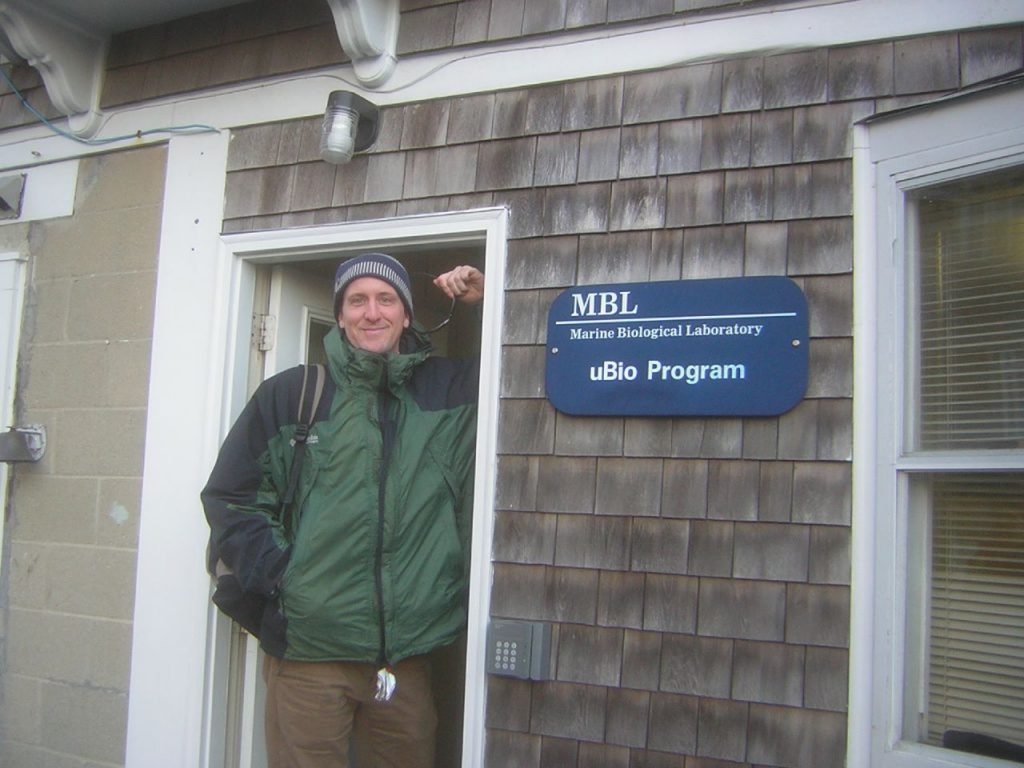
To begin, Patterson and Remsen incorporated TNS into micro*scope, with the help of coders in the Bay Paul Center. Seeing “that there was enormous potential,” Patterson said, they also began collaborating on a project called uBio, an ambitious effort to develop a universal biological indexing system that could be embedded in Internet search engines. uBio incorporated the “names resolution” capacity of TNS and had additional functions they collectively called “taxonomic intelligence.”
“In the fall of 2000, representatives from the Mellon Foundation were on campus meeting with Cathy Norton, who was trying to convince them to build a new wing for the library,” Patterson recalled. But the Mellon Foundation was more interested in digital projects. “So Cathy ran out and grabbed Dave Remsen and I and asked us to explain uBio and taxonomic intelligence to the Mellon folks. One of Dave’s great, great skills was gift of the gab – I mean he could just talk about everything and pitch it in a beautiful way – and they were totally convinced in that meeting.” The Mellon Foundation stepped up to fund uBio.
They were in the right place at the right time. By the mid-2000s, efforts to digitally index biological species had become a red-hot topic internationally. “There were scores, maybe a few hundred experiments in that direction between about 1995-2010,” said Jesse Ausubel, then a program manager at the Alfred P. Sloan Foundation. “The MBL, along with the Smithsonian Libraries, the Missouri Botanical Garden, and a few other places, were the hotbeds in the United States.”
Remsen, “integrated himself quickly into the taxonomist community, which was just a hotbed of different ideas and different ways of approaching things,” Sogin recalled.
Remsen’s informatics contributions found significant applications in international projects. For instance, it laid the groundwork for a taxonomic infrastructure for the nascent Biodiversity Heritage Library (BHL), which today is the world’s largest open-access digital library for biodiversity literature and archives.
Remsen was a “key founding figure” in the BHL and “one of the most creative minds” in the biodiversity informatics community, wrote Martin Kalfatovic in a memorial notice for Remsen.
“Dave developed tools that would go through digital texts and hunt down all the scientific names of animals – really groundbreaking stuff at the time – and allow a computer to automatically index which publications talked about which names,” said Pyle. “That work was really transformational, and it set a lot of future projects on that course. He did some amazing things.”
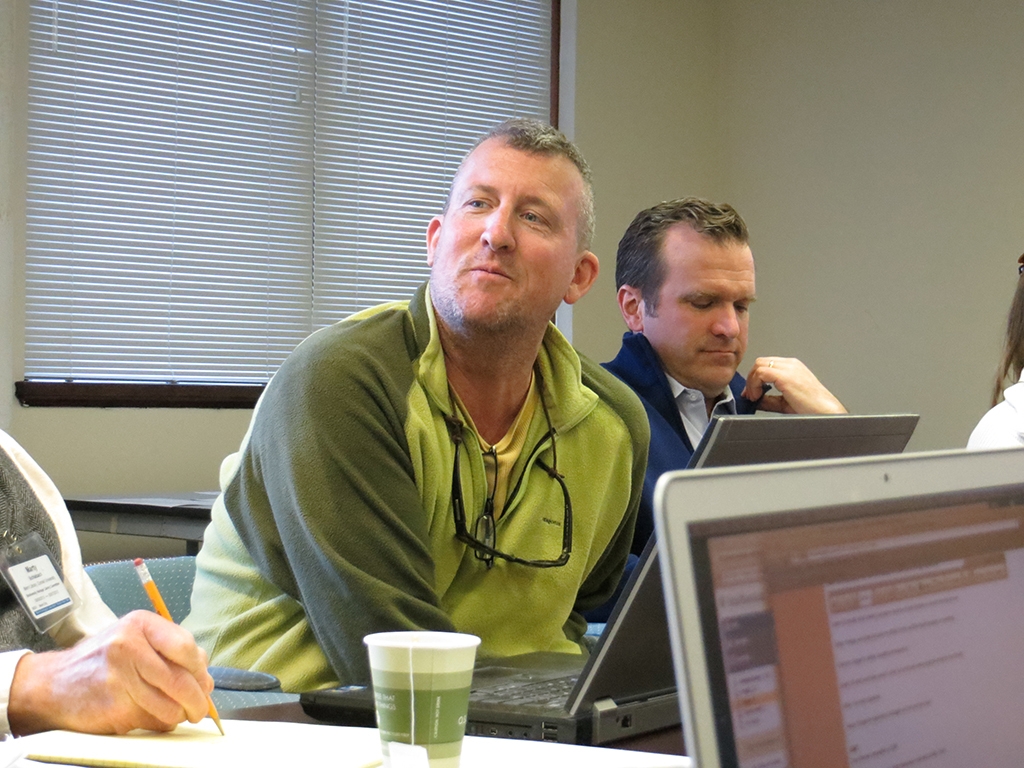
“Dave Remsen was a lively, creative thinker, and in the thick of ecology/taxonomy bioinformatics development,” said Ausubel. “He had good vision.”
In 2006, Remsen accepted a position as senior program officer at the Global Biodiversity Information Facility (GBIF) in Copenhagen, the leading international organization providing open access to scientific data on biodiversity. Remsen, his wife, Dana Mock-Muñoz De Luna, and their first son, Lucas, moved to Copenhagen; their second son, Gabriel, was born there in 2007.
Meanwhile, back at the MBL, Patterson’s micro*scope project had caught the eye of Ausubel at the Sloan Foundation, who was deeply involved in funding international efforts to catalog biodiversity. In 2007, the MBL became a founding partner in the Encyclopedia of Life (EOL), a high-profile effort to create a free, online, multimedia encyclopedia documenting all 1.8 million named species on Earth. The MBL was charged with developing the EOL’s biodiversity informatics infrastructure, a project headed up by Patterson.
“Remsen created the kernel upon which the Encyclopedia of Life was built,” Borisy said, referring to TNS, which sparked uBio/taxonomic intelligence, which provided the foundation for EOL. “His contribution was absolutely central,” said Borisy, who was a member of EOL’s steering committee.
“Dave had a real skill for seeing the logic and structure of organizing information by species names,” said UChicago’s Westneat, who worked on a species database called FishBase and was EOL lead at the Field Museum in Chicago. “Dave was a key part of the early efforts to develop a Global Names Architecture,” he said. Today, “all of our lab’s work on biodiversity, conservation, and coral reefs depends on this architecture.”
“It’s a tribute to Dave’s intelligence and his insights that he did so much that was novel in biodiversity informatics,” said Patterson. “He was not an imitator in that world. He was a very creative thinker.”
Back to Woods Hole and the MBL
While Remsen was successful in Copenhagen, Woods Hole never left his mind. In the late 2000s, Remsen asked Borisy whether there might be an opportunity for him to return to the MBL.
“[GBIF] was a wonderful job, and he loved it a lot,” Borisy said. “But he wanted to return to Woods Hole. He wanted his boys to know what it's like to be by the ocean in Woods Hole, to fish, to experience life in the village,” he said.
An opportunity did arise and Remsen was hired as the Marine Resources Center manager in 2012. “The experience at GBIF had prepared him for higher-level organizational responsibilities, and he had a plan to make the MRC sustainable. And he saw it as a mission to serve MBL researchers and students,” Borisy said. “It was a perfect match.”
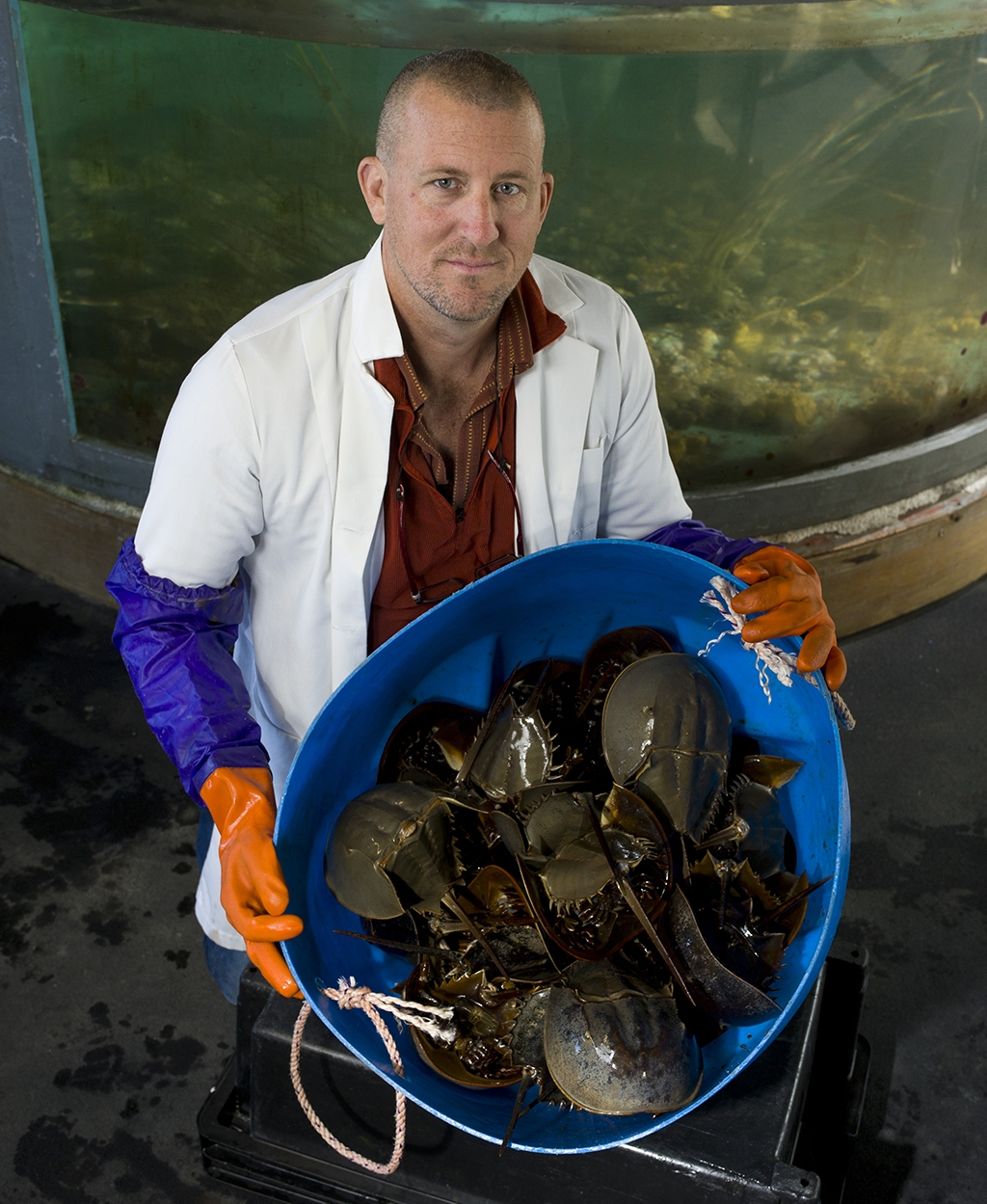
By all accounts, Remsen loved this position, where he managed a team of about 10 people, and he was superb at it.
“The Marine Resources Center is the heartbeat of the MBL,” said Sylvester. “The [species] collection, keeping the tank rooms functioning, providing the resources needed for the thousands of scientists and students who come to MBL and the resident faculty -- It’s a critical position because it’s so central. But it’s also how Dave carried out the position. He knew the science very well and could articulate and explain it, and that gave great credibility to the MBL overall.”
“Dave was amazing to work under,” said Dan Calzarette, who worked for Remsen in the MRC. “He had a passion for this building and for everything that was done here. He was always trying to make upgrades and improvements to work toward the future of what MBL was focusing on.”
Remsen used his knowledge of MBL research, past and present, to design aquatic systems for specific scientists, Calzarette said. “He’d contact, for example, the Grass Fellows before they arrived, and he’d have a whole plan [of aquatic systems] ready when they got here. And then I would build them. He also knew how to draw on the expertise of his staff to arrive at the best solution. He asked us questions, and I felt like he was listening,” Calzarette said.
“Dave was a once-in-a-lifetime supervisor,” said Pyszka. “Being a young female in a very male-dominated industry, I felt very much advocated for. He was very fair, and he wanted to see people do well. He was the gold standard for mentorship. He was the complete opposite of a micromanager.”
“I think Dave was a great leader,” said Sogin. “People liked working for him; they respected him. Another thing I’ll say: In most institutions, it’s rare that people who don’t have PhDs are included in faculty meetings. Over the past several years Dave Remsen, along with Louis Kerr (director of Imaging Services) was invited to MBL faculty meetings. He was treated as a peer.”
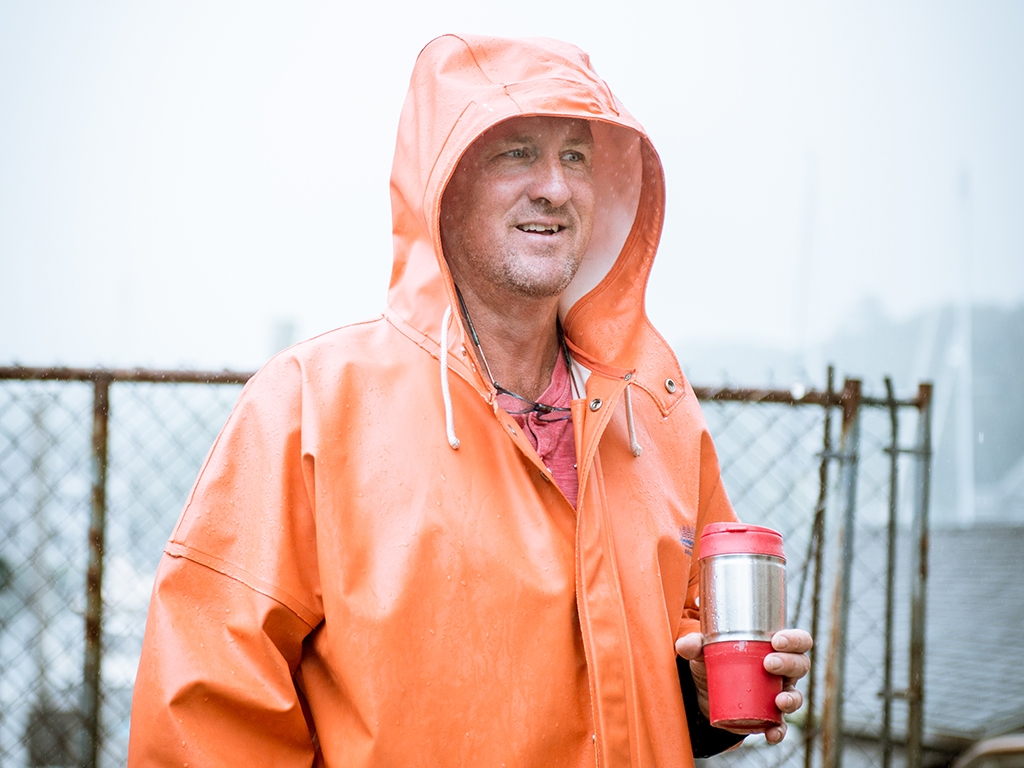
Dreams and ambitions
Remsen had his hands full with the daily operation of the MRC, but he also dreamed of ambitious projects that united his Renaissance-like interests. One was a robust database of Woods Hole species, similar to the Catalogue of Life (Remsen chaired their information systems group). Each species would have its own web page, enriched with content pulled in from many trusted sources. As Remsen described his vision in 2014:
One of my goals is to develop knowledge bases around all the organisms that Marine Resources provides. Each species is the focal point for an enormous amount of information. Look at all the research that has been done with squid, for example, all the collaborators, the methods they developed, the papers they wrote. That is tied to the features that make an animal a good model, such as the giant axon system of the squid, and those features are tied to the animal’s natural history and its ecological niche. It’s an enormous story to tell. I think there is great potential for a renaissance in the use of marine models, as the genomic tools have matured. It would be strategic for the MBL to collate, coordinate, and present the information on those models, so incipient investigators can make the jump to start using them.3
An early version of Remsen’s Marine Organisms Database is preserved in the Internet Archive’s Wayback Machine. Remsen had started to rebuild it in MBL’s current website several months before he died. Currently, an Excel sheet lists the animals the MRC can provide to researchers. It would take a dedicated effort to develop the MBL species database that Remsen envisioned; in 2019 he said he would “jump at the chance to have funding to initiate it.”8
Importantly, Remsen’s database would also preserve a record of where species are found and when. Knowing where to collect species “is an oral tradition. The collectors know. That is why they are so valuable,” Remsen said in 2014. With Remsen gone, this knowledge currently resides mainly with William Grossman, a long-time MBL collector.
“We have a great opportunity here,” Remsen said. “Imagine if all the MBL collectors actually wrote down what they saw, where they saw it, how many they caught. We’d have a time series of information regarding changes in distribution of species. We could use that for many scientific purposes, such as ecological niche models or trends in habitat distribution.”3
Remsen even envisioned an MBL course on biodiversity where the students themselves would go out collecting, analyze what they found and, with some training in biodiversity informatics, record their data in the Woods Hole species database. In brainstorming this idea in 2016 with Sánchez Alvarado on the Gemma, they floated possibilities such as having it seasonally, with an interdisciplinary cohort of students who would be cross-trained in, for example, natural history, physiology, genomics, and biodiversity informatics. “I think it would be transformative,” Remsen said.
Looking back on this conversation in 2023, Sánchez Alvarado said, “Imagine if we had been doing this course for 100 years, we would have cataloged everything by now…It would be a complete record not just of sampling, but of relationships of species to each other, frequencies of appearance, waxing and waning, interactions between genomes, transcriptomes, proteomes, etc. It could be potentially a very rich resource for the life sciences in general.”
“I think if you don’t understand the natural history of the organisms you are studying, you won’t miss it, and you will be led into thinking that you understand the function of those very interesting genes you just cloned,” Sánchez Alvardo continued. “But a complete dissociation of the animal from its environment runs the risk of us fooling ourselves into thinking we know what those genes are for. Because the genes and their functions, and the biological attributes that are encoded by them, were chiseled by nature, by evolution, which takes place not in the lab, but in the natural environment in which these animals reside. When we lose sight of that, I think we reach conclusions that are limited.”
“To have an opportunity to go out and collect animals from their environment and see how they live – that’s the door that the Gemma and Dave would open on a regular basis to scientists like me,” Sánchez Alvardo said.
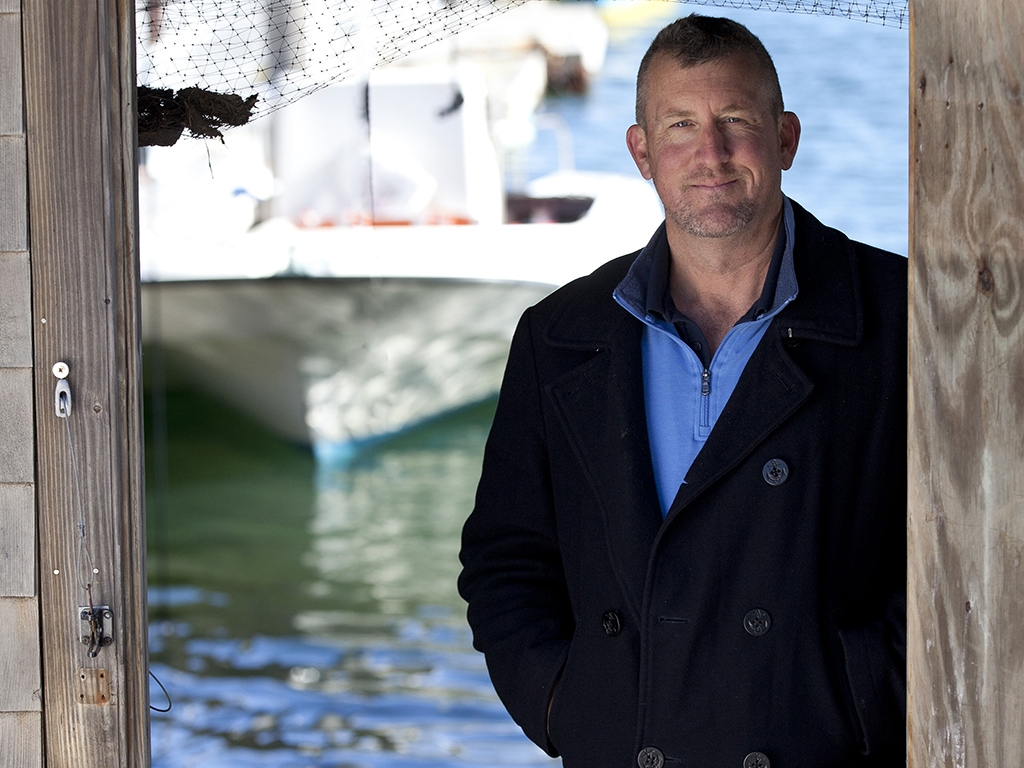
A forever legacy
The MBL is regaining its balance, as it always seems to do, in the wake of the loss of David Remsen. MBL Veterinarian and Staff Scientist Lisa Abbo, who worked closely with Remsen since she joined the MBL in 2017, has been named director of the Marine Resources Department, providing oversight of the core animal collections and welfare, along with managing the staff and husbandry operations in the MBL’s animal facilities.
“Everyone on the MRD team has stepped up to carry on Dave’s legacy of generous service to the research and education community,” said Sylvester. “This spirit of teamwork was nurtured by Dave, and it’s carried on now as a permanent imprint of his years as director of Marine Research Services.”
About three years ago, at Remsen’s suggestion, he began meeting every Thursday morning with Richard Pyle of the Bishop Museum and Nicolas Bailly of FishBase. “Dave said, ‘Let’s finish this task of creating this information infrastructure,” Pyle said. Their discussions focused on a “utopian vision” of creating “a nonpartisan identifier of information that bridged all the various biodiversity informatics initiatives [such as GBIF, Catalogue of Life, etc.], so they could preserve their individual roles in the landscape of online biodiversity information, but are connected behind the scenes.”
“We had a lot of good ideas,” Pyle said, and Remsen’s prodigious contributions are preserved in Google docs. Although Pyle and Bailly have full-time jobs, as Remsen did, they are continuing this effort, which was originally envisioned as a paper but has turned into a book. “We have 15 chapters already. And we will have a section of the book that will represent, from the informatics community’s view, ‘Here is what Dave meant to all of us,’” Pyle said.
Students and scientists come to Woods Hole and leave energized and inspired, many talking about “the MBL magic.” What that means to different individuals may vary. For Remsen, the local marine environment and its life forms were a source of endless wonder and curiosity, and he took great pride and happiness in sharing his vast knowledge of them with everyone who came to MBL. If discovery of the natural world is the magic, David Remsen’s spirit will always be there for us in Woods Hole.
Remsen’s contributions to and impact on MBL science, education and community will be forever remembered by a granite memorial to be installed behind the Marine Resources Center this fall. The “Gemma dock,” located behind the MRC on Eel Pond, will be named the David Remsen Dock in his memory.
Many thanks to everyone who shared their thoughts on David Remsen for this article, including Denis Renna and Rich Fox in addition to those named in the text.
All quotes in this article that are not cited below are from recorded interviews conducted in 2023 by Diana Kenney (dkenney@mbl.edu) or, for the University of Chicago faculty, Matthew Wood (mwood2@bsd.uchicago.edu).
(1) Personal communication from David Patterson.
(2) History of Marine Biological Laboratory: David Remsen interview (2013)
(3) Kenney, Diana, “The Collector’s Net,” interview with David Remsen for MBL Catalyst, pp. 12-13, January 2014.
(4) Science@Work Lecture Series with David Remsen, 4/23/18, Tabor Academy.
(5) Sarkar, Indra Neil (2007) Biodiversity Informatics: Organizing and Linking Information Across the Spectrum of Life. Briefings in Bioinformatics, DOI: 10.1093/bib/bbm037
(6) See, e.g., “1998 Medical Informatics Course Objectives,” https://hdl.handle.net/1912/21274
(7) Humphreys, Betsy L et al. (1998) The Unified Medical Language System. J. American Medical Informatics Assoc., DOI: 10.1136/jamia.1998.0050001
(8) Email from Diana Kenney to Ashley Bolbrock, Nov. 6, 2019
Remsen DP, Patterson DJ. Biol Bull. 2004 Oct;207(2):170. doi: 10.1086/BBLv207n2p170.
Taxonomic informatics tools for the electronic Nomenclator Zoologicus.
Remsen DP, Norton C, Patterson DJ. Biol Bull. 2006 Feb;210(1):18-24. doi: 10.2307/4134533.
Taxonomic indexing--extending the role of taxonomy.
Patterson DJ, Remsen D, Marino WA, Norton C. Syst Biol. 2006 Jun;55(3):367-73. doi: 10.1080/10635150500541680.
Using Pharmabase to perform pharmacological analyses of cell function.
Smith PJS, Remsen D. Curr Protoc Bioinformatics. 2006 Mar;Chapter 14:14.2.1-14.2.17. doi: 10.1002/0471250953.bi1402s13.
uBioRSS: tracking taxonomic literature using RSS.
Leary PR, Remsen DP, Norton CN, Patterson DJ, Sarkar IN. Bioinformatics. 2007 Jun 1;23(11):1434-6. doi: 10.1093/bioinformatics/btm109. Epub 2007 Mar 28.
Hill AW, Guralnick R, Flemons P, Beaman R, Wieczorek J, Ranipeta A, Chavan V, Remsen D. BMC Bioinformatics. 2009 Nov 10;10 Suppl 14(Suppl 14):S3. doi: 10.1186/1471-2105-10-S14-S3.
Semantic tagging of and semantic enhancements to systematics papers: ZooKeys working examples.
Penev L, Agosti D, Georgiev T, Catapano T, Miller J, Blagoderov V, Roberts D, Smith VS, Brake I, Ryrcroft S, Scott B, Johnson NF, Morris RA, Sautter G, Chavan V, Robertson T, Remsen D, Stoev P, Parr C, Knapp S, Kress WJ, Thompson CF, Erwin T. Zookeys. 2010 Jun 30;(50):1-16. doi: 10.3897/zookeys.50.538.
Remsen D, Knapp S, Georgiev T, Stoev P, Penev L. PhytoKeys. 2012;(9):1-13. doi: 10.3897/phytokeys.9.2770. Epub 2012 Jan 30.
Scientific names of organisms: attribution, rights, and licensing.
Patterson DJ, Egloff W, Agosti D, Eades D, Franz N, Hagedorn G, Rees JA, Remsen DP. BMC Res Notes. 2014 Feb 4;7:79. doi: 10.1186/1756-0500-7-79.
The use and limits of scientific names in biological informatics.
Remsen D. Zookeys. 2016 Jan 7;(550):207-23. doi: 10.3897/zookeys.550.9546. eCollection 2016.
Transient coastal landscapes: Rising sea level threatens salt marshes.
Valiela I, Lloret J, Bowyer T, Miner S, Remsen D, Elmstrom E, Cogswell C, Robert Thieler E. Sci Total Environ. 2018 Nov 1;640-641:1148-1156. doi: 10.1016/j.scitotenv.2018.05.235. Epub 2018 Jun 7.